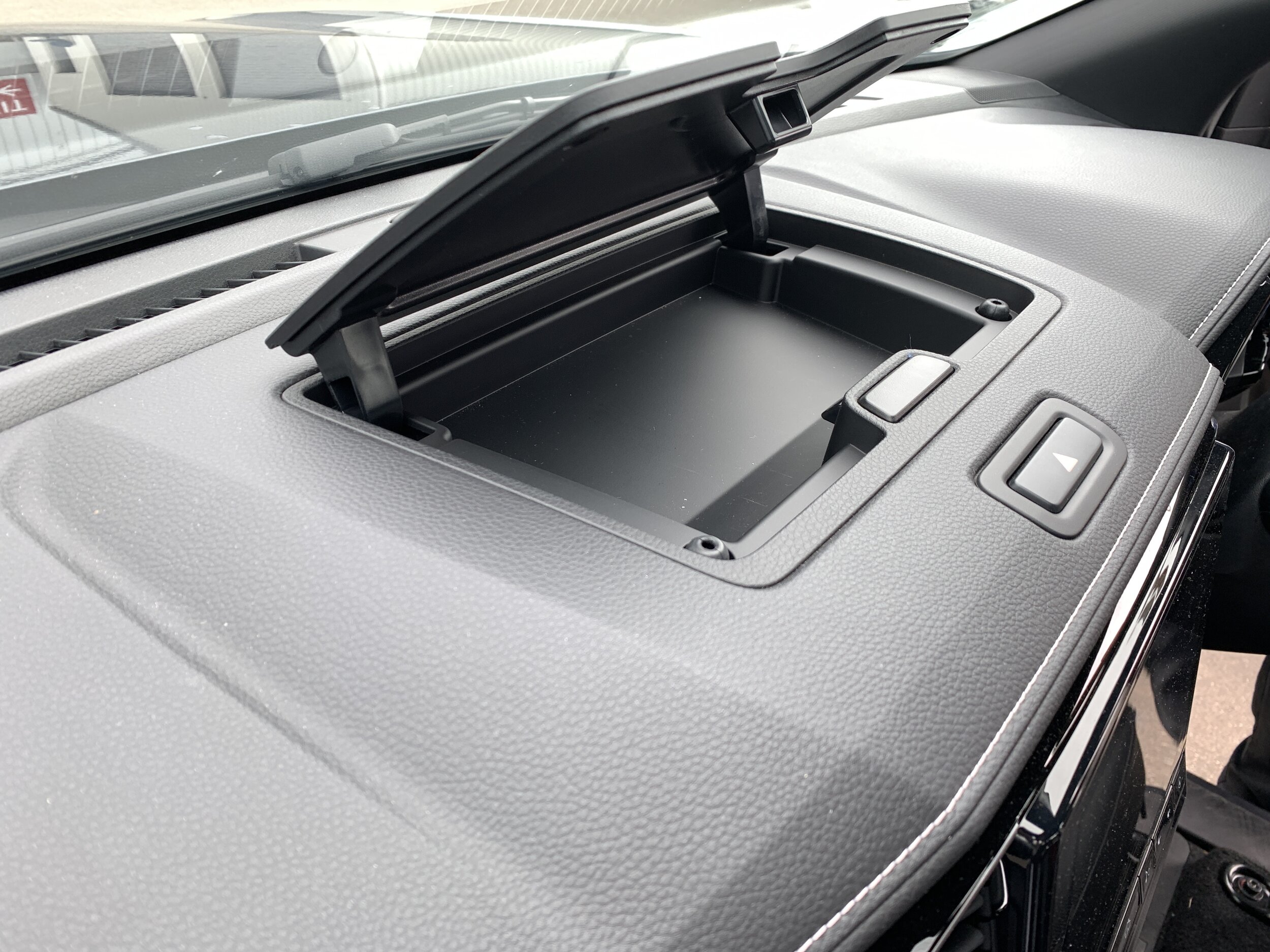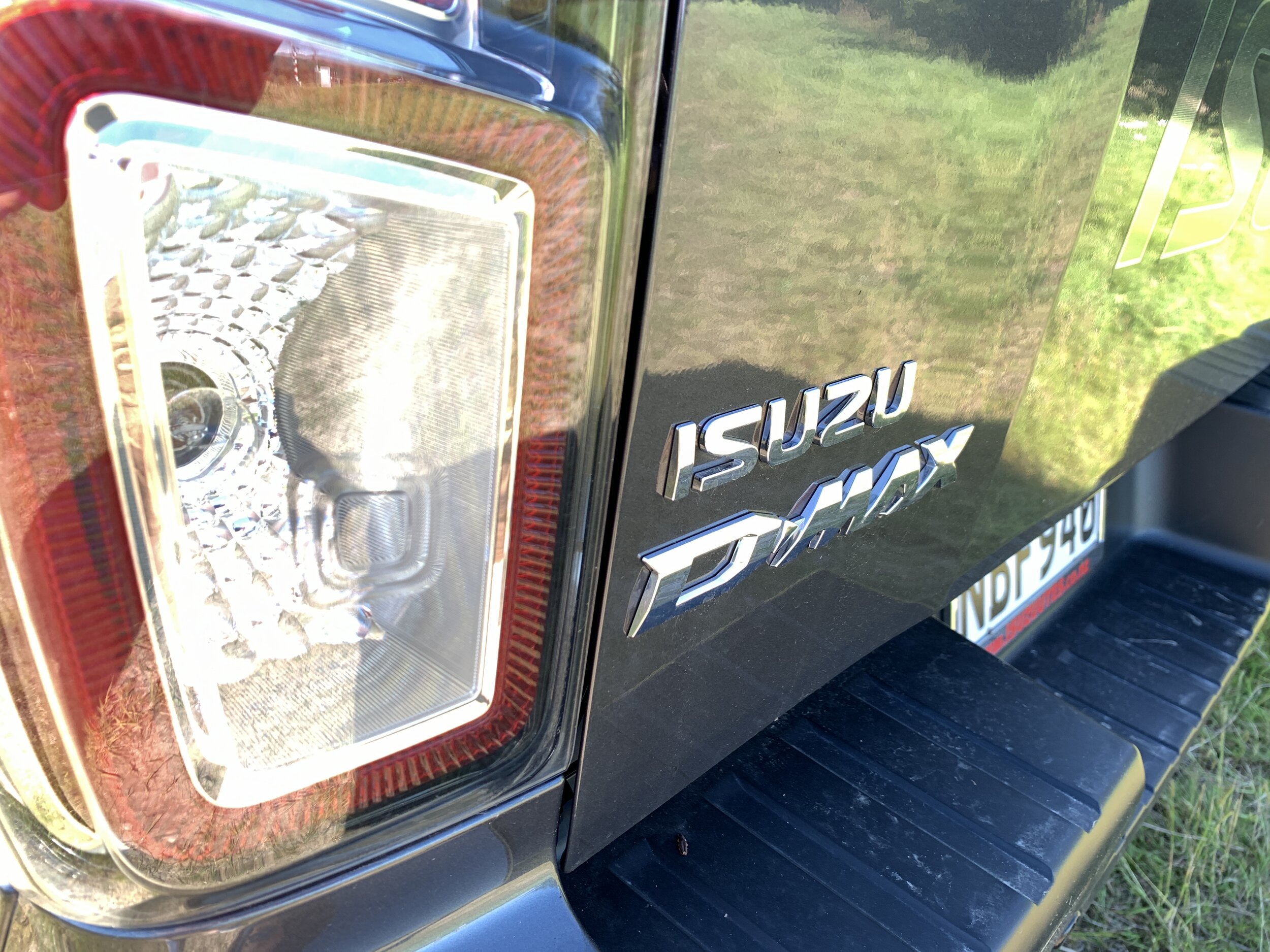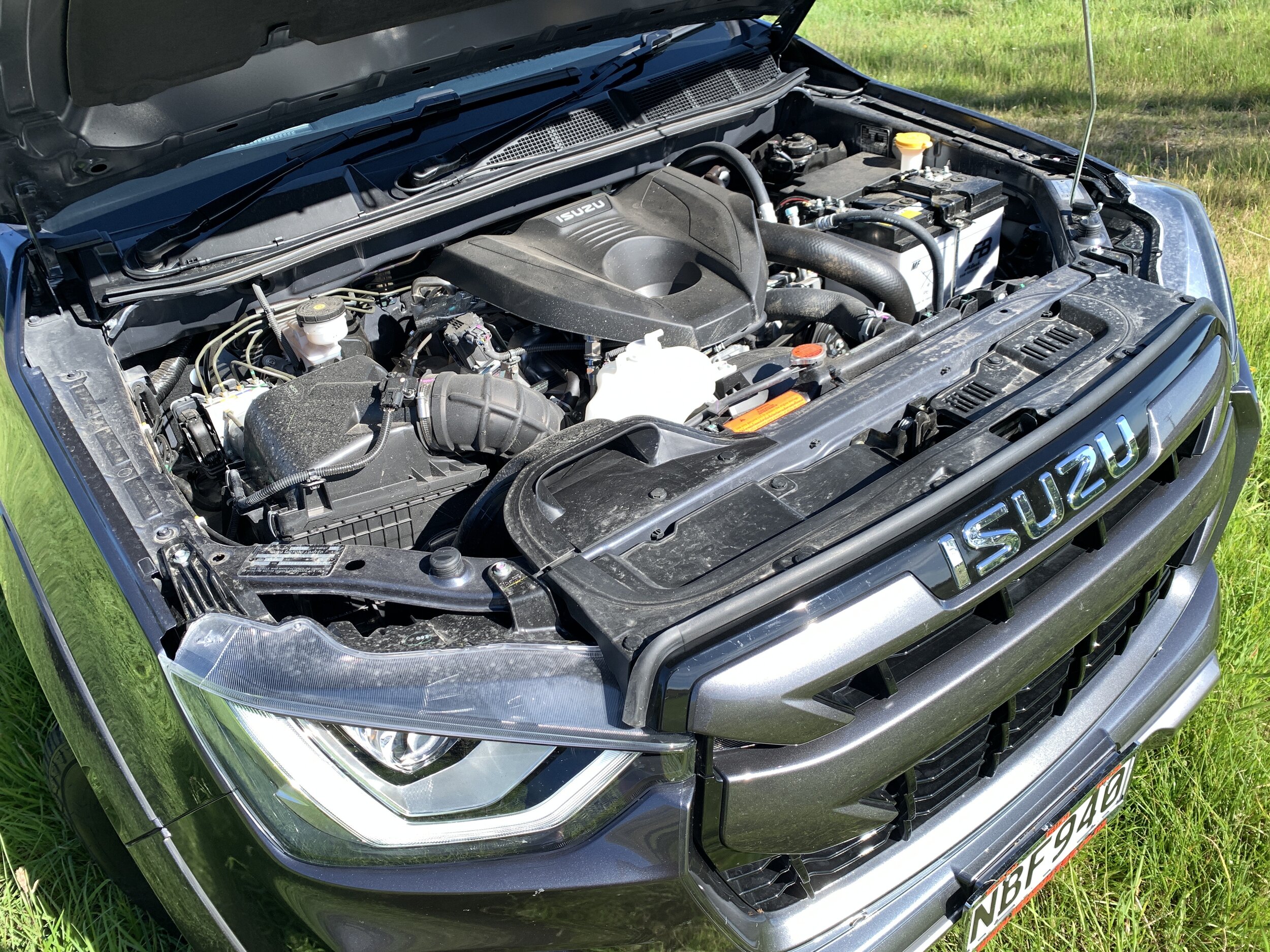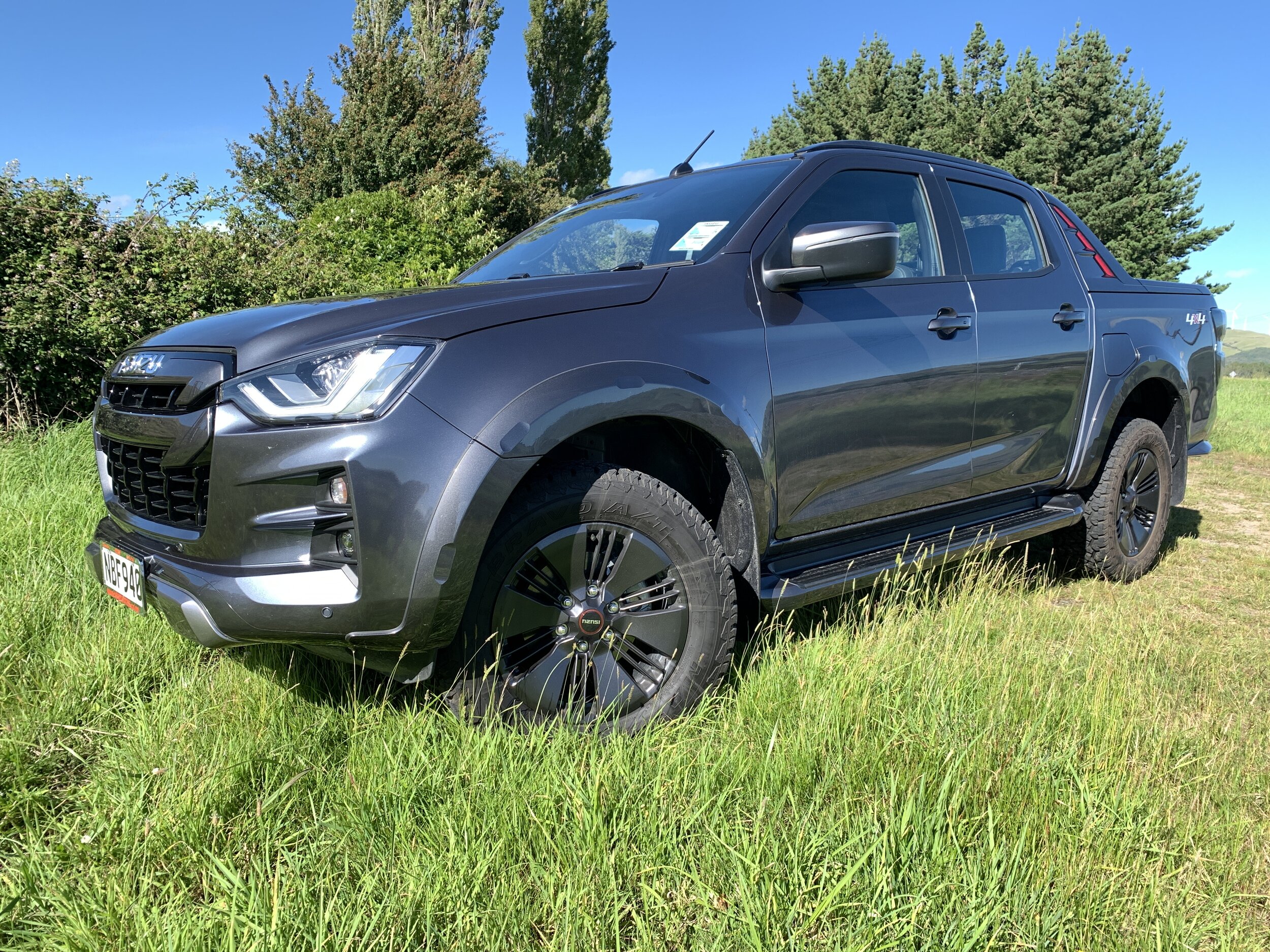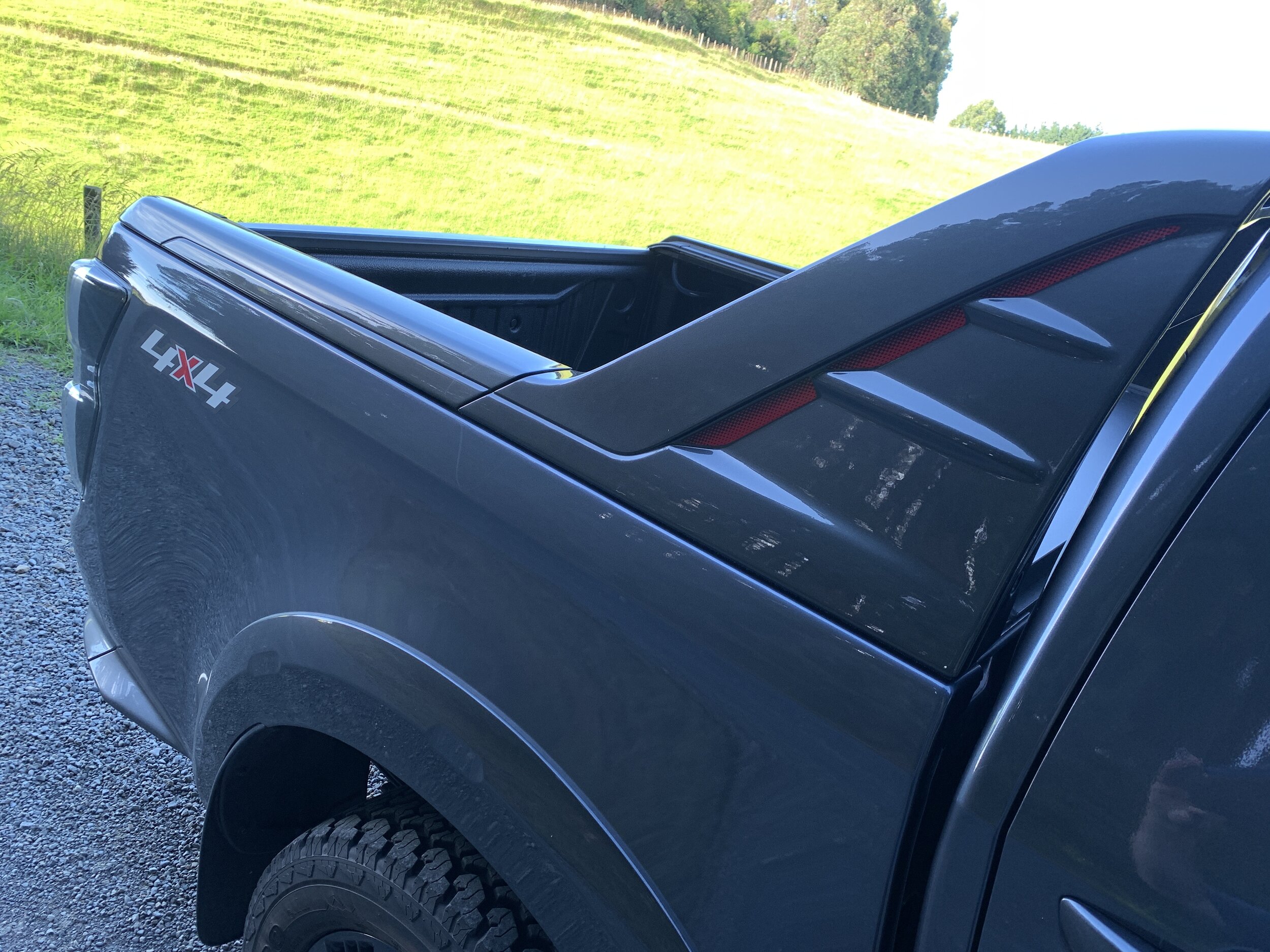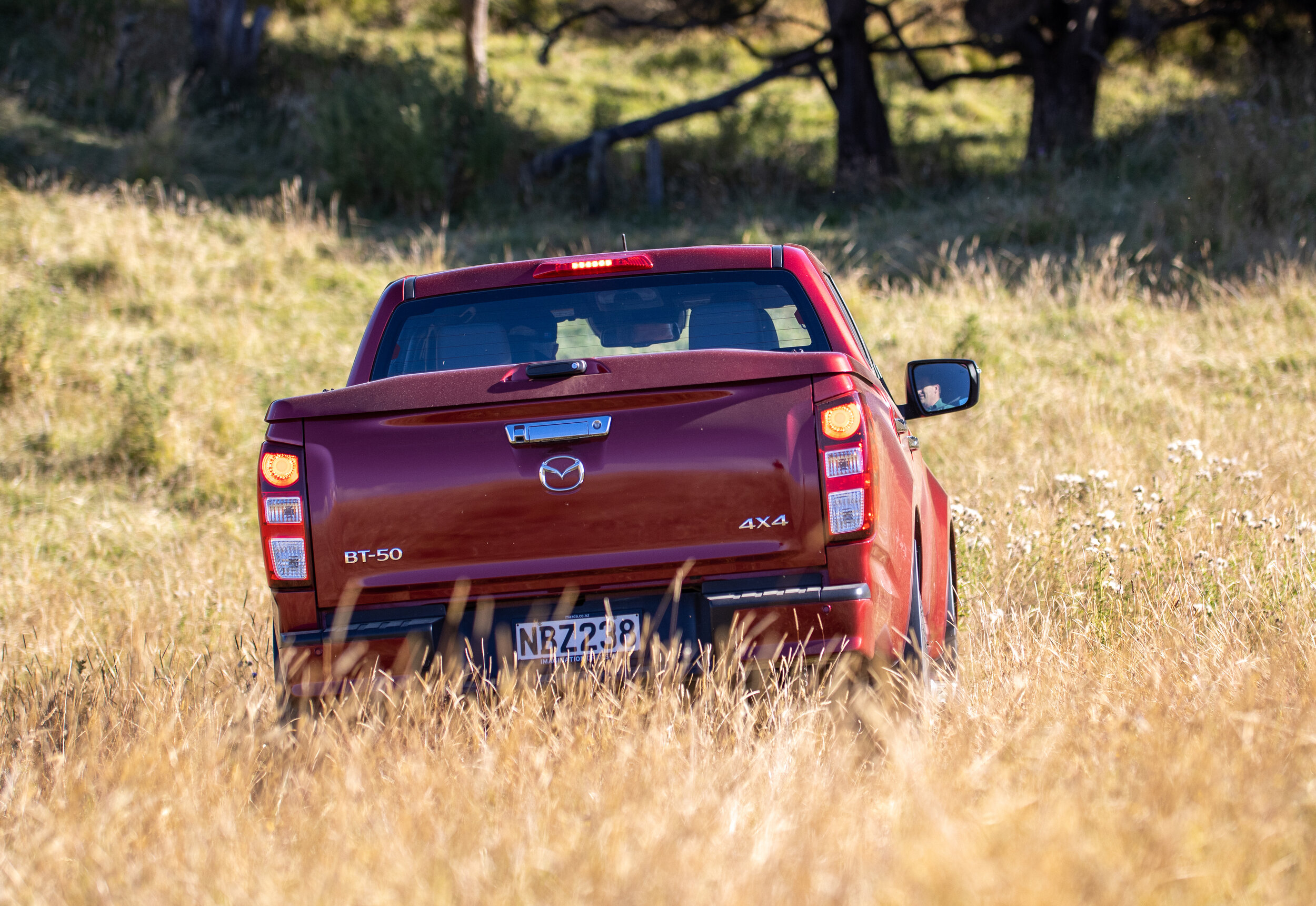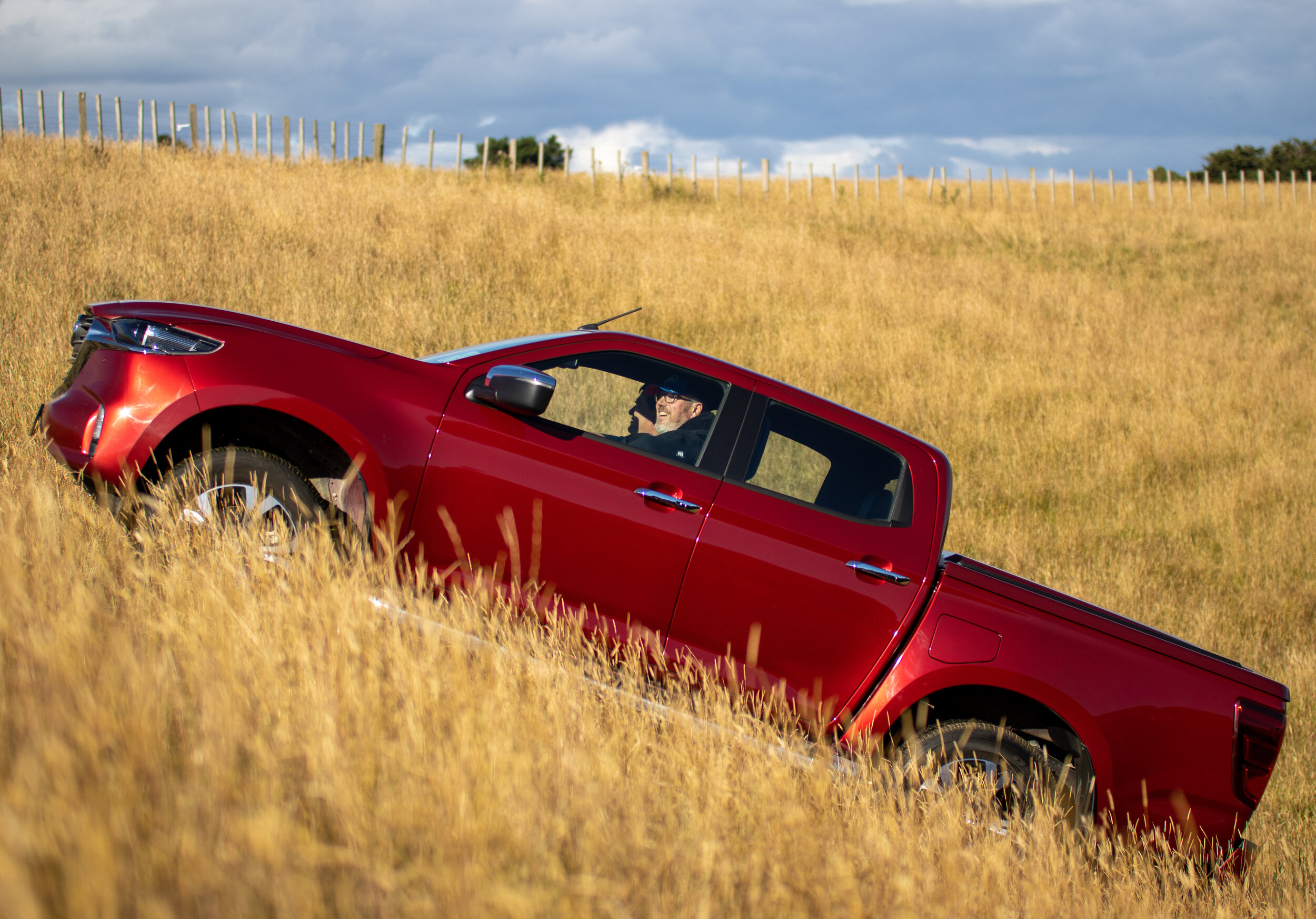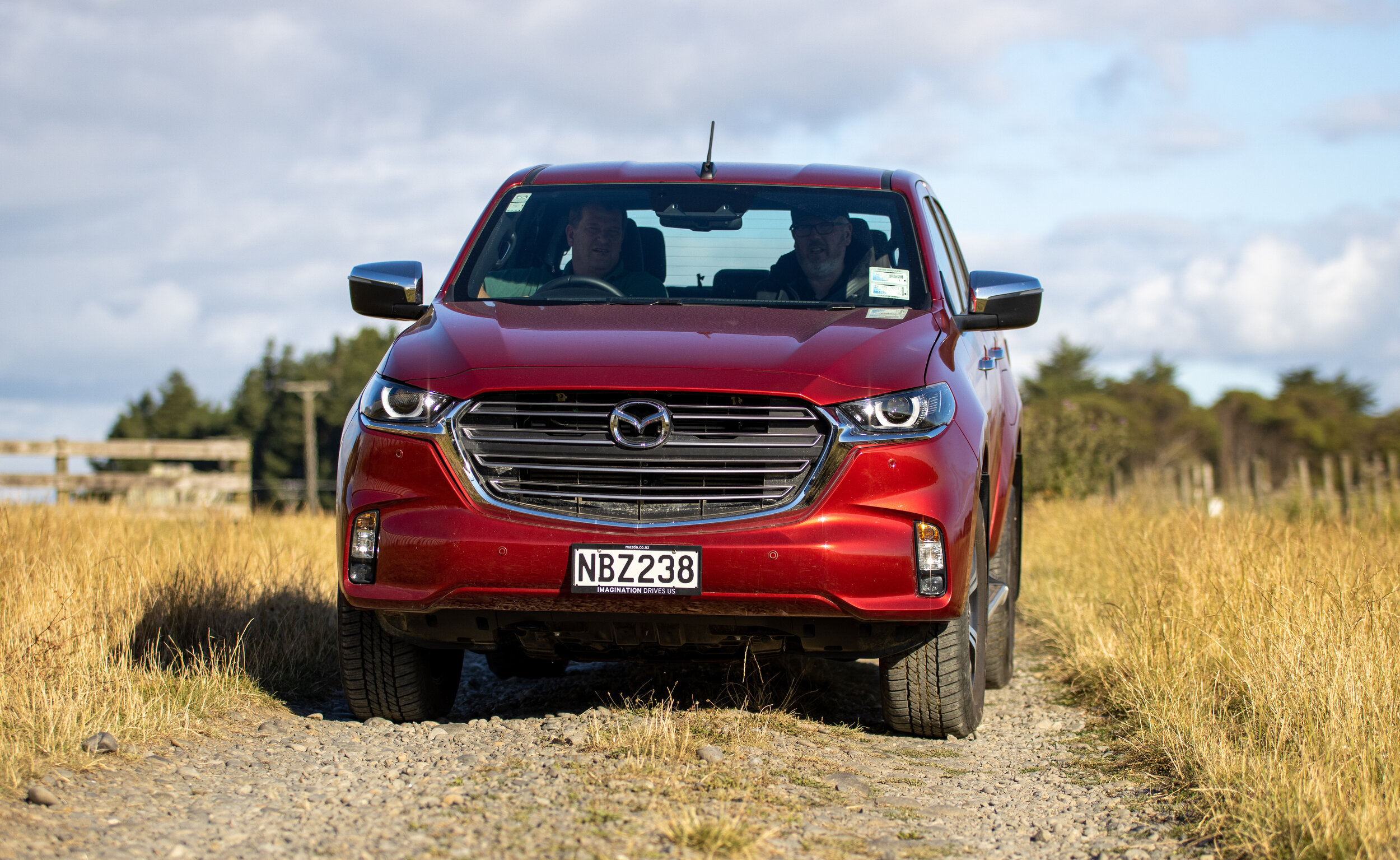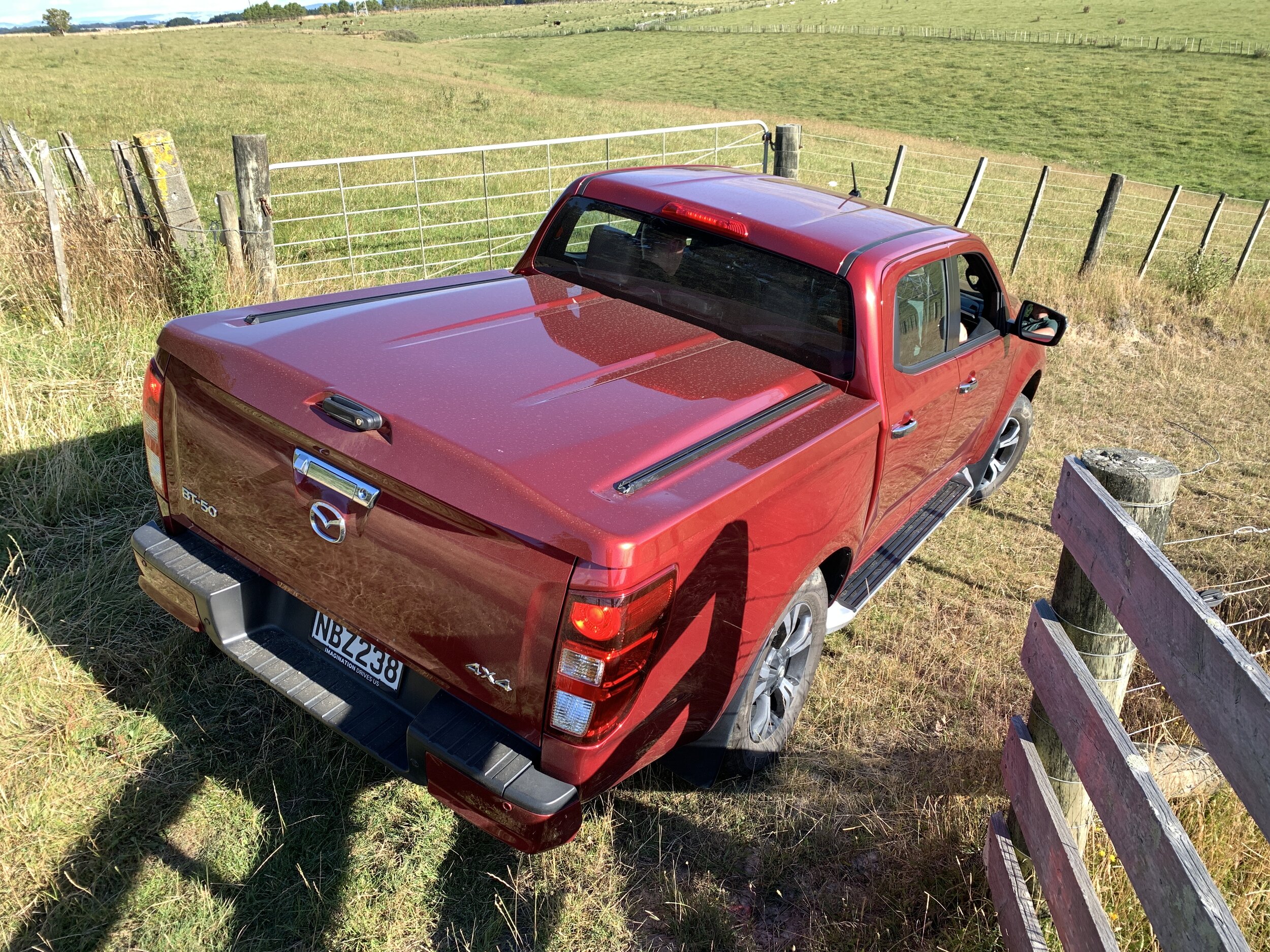Beyond that, it’s all common territory. Same broad, soft but comfy seats, steering wheel and major controls and so on. Both dress their seats in leather – black with Isuzu, a more controversial brown with Mazda – and there's good adjustment for the driver to achieve a decent driving position: Rake and reach adjustment for the steering, height adjust for the driver's seat, and lumbar adjustment too.
The driver's electric seat adjustment is eight-way, but there are no memory settings. The passenger seat lacks any electric adjustment, which might irk more in the X-Terrain, given it being in a semi-premium price band. The back seats in each are comfy, though – as is common for utes – you have to put up with a near-vertical seat back, with excellent leg and head room. There is enough room for three adults to fit across, and two ISOFIX and two top-tether loops allow two child seats in the back.
The models’ electric assists and infotainment features are a tour de force, no argument, and all that imprint is also Isuzu-led. The safety and assist systems’ integration is solid; the functions that warn of the potential of an imminent collision, keep the vehicle within its lane, alert to a change in speed zone are perhaps a touch nanny-ish at times – and you’ll perhaps tire of it sounding warning chimes – yet you shouldn’t diss this stuff. It might save your skin.
Likewise, the utes’ off-road aides are nicely inprinted; it’s easy to scroll from rear-wheel-drive into the all-wheel-drive modes and, especially when the rear diff lock is engaged (for no obvious reason, a tricky business in the BT-50), it’s impressively confident through a gnarly landscape.
It's the integration and implementation of the on-cabin information and infotainment systems where the wheels fall off. Isuzu has taken on a mammoth task in corralling a wide span of data flows and driver involvements for scrutiny (just look at how much of the Bible-sized handbook is given over to its operability). But they’ve tried too hard and come up short. Mazda must be wishing it could have delivered its version with the same MZD format that goes into its cars.
All sorts of things don’t quite come off. The Android Auto and Apple CarPlay options are respectively via USB and wireless and USB-connect; clever, yes, but it would have been smarter still with an inductive charging pad. When a phone is wirelessly relaying, it’s chomping through the power. Tethering fixes this, but surely makes the Bluetooth link unnecessary.
The graphics of both screens are surprisingly basic and the fiddliness in operability, especially of the one in front of the driver which contains core driving data, becomes a test of patience, not least when deep-diving into the sub-menus. It’s also unfortunate the large screen seems prone to glitch. Both examples were hit by occasional screen freeze, phone system deactivation and slow prompt responses. Does that suggest a firmware issue?
Still, the depth of the safety kit is brilliant. Buy into either range and regardless of the variant you get eight airbags, autonomous emergency braking, stop/go adaptive cruise, blind spot detection, lane departure warning/assist, forward collision avoidance, drive attention warning, automatic high-beam lights, rain-sensing wipers and a reversing camera. Perhaps one of the most interesting inclusions is the front-centre airbag - to protect those in the front seats in the event of a side impact. That is required for a five-star ANCAP rating under 2020 criteria, D-Max and BT-50 are the only utes to have it.






